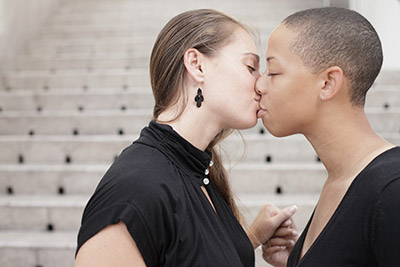Women more likely to identify as bisexual than men
 In the wake of the recent trend of female celebrities, like Miley Cyrus, coming out as “sexually-fluid”, a new study suggests that women tend to be more open to bisexuality compared to men.
In the wake of the recent trend of female celebrities, like Miley Cyrus, coming out as “sexually-fluid”, a new study suggests that women tend to be more open to bisexuality compared to men.
Study author Elizabeth Aura McClintock, an assistant professor of sociology at the University of Notre Dame, found that women are more likely than men to report being bisexual.
Men, on the other hand, are more likely to report being either “100 percent heterosexual” or “100 percent homosexual.”
McClintock’s study tracked almost 10,000 Americans – 5,018 women and 4,191 men – as they moved from adolescence (16-years-old) to young adulthood (28-years-old).
In the process, she also found that women were three times more likely than men to change their sexual identities over time as they reach their late twenties.
“Women have a greater probability than men of being attracted to both men and women, which gives them greater flexibility in partner choice,” said McClintock.
Her research showed that women with more education and women who were more physically attractive (as rated by their interviewers) had higher probabilities of identifying as “100 percent heterosexual” than other women.
McClintock speculated that women who avoided young motherhood, were physically attractive, or had high levels of education may have been less likely to explore relationships with same-sex partners because they had more romantic opportunities with male partners.
In other words, their social position facilitated a hetero-conformist identity and thus discouraged alternative sexual identities, according to McClintock.
“Women with some degree of attraction to both males and females might be drawn into heterosexuality if they have favourable options in the heterosexual partner market,” McClintock said.
“Women who are initially successful in partnering with men, as is more traditionally expected, may never explore their attraction to other women.”
Interestingly, for men, higher levels of education were associated with a lower likelihood of identifying as “100 percent heterosexual”. Physical attractiveness also had no clear link with sexual identity when it comes to men.
“Men are less often attracted to both sexes,” McClintock said. “Men’s sexuality is, in this sense, less flexible. If a man is only attracted to one sex, romantic opportunity would little alter his sexual identity.”
McClintock believes, however, that sexual identity is a social construct. “It is important to emphasise that I am not suggesting that same-sex unions are a second-best option to heterosexual unions,” McClintock said.
“And I do not think that women are strategically selecting an advantageous sexual identity or that they can ‘choose’ whether they find men, women, or both sexually attractive. Rather, social context and romantic experience might influence how they perceive and label their sexual identity.”
Leave a Reply